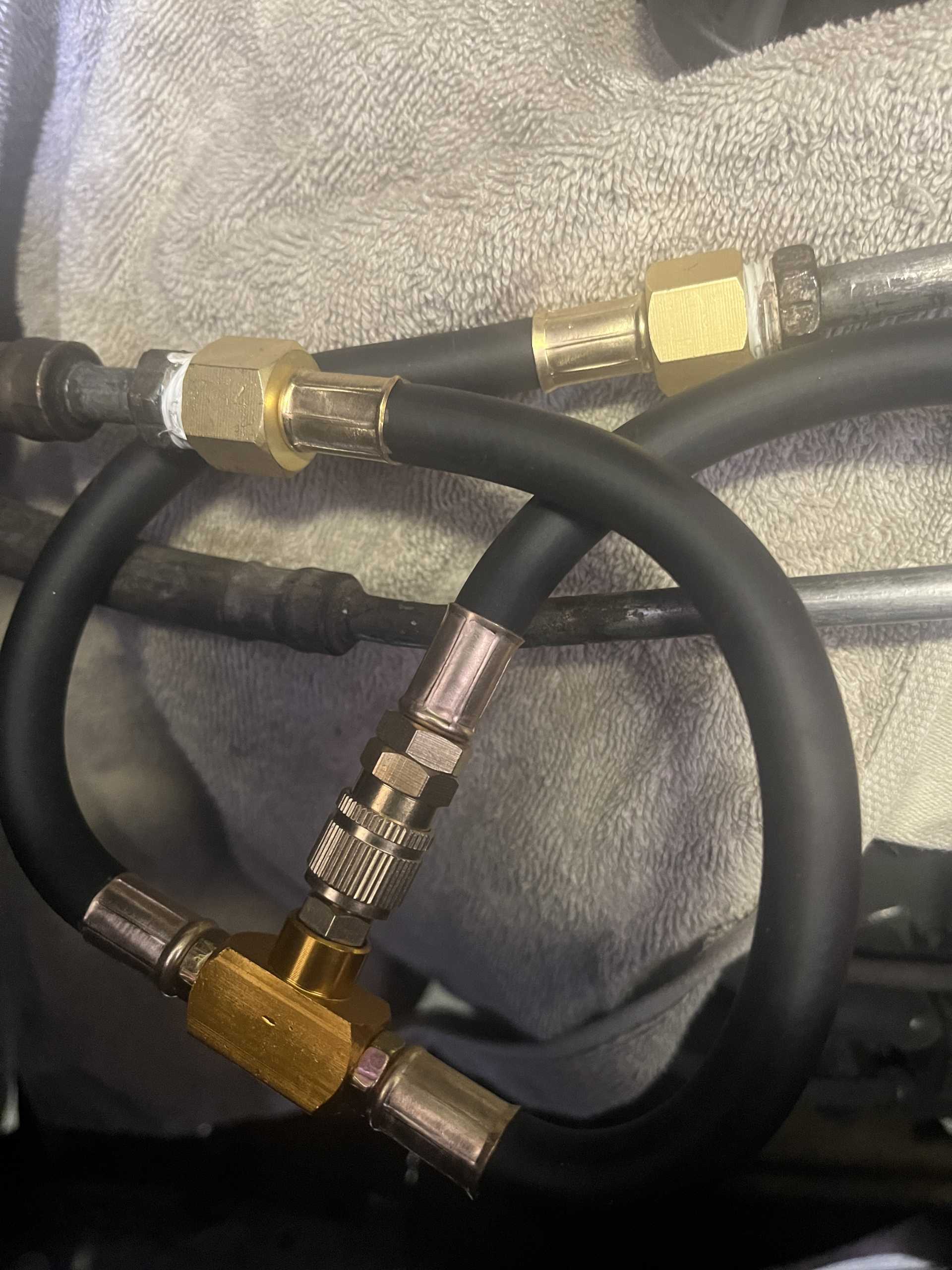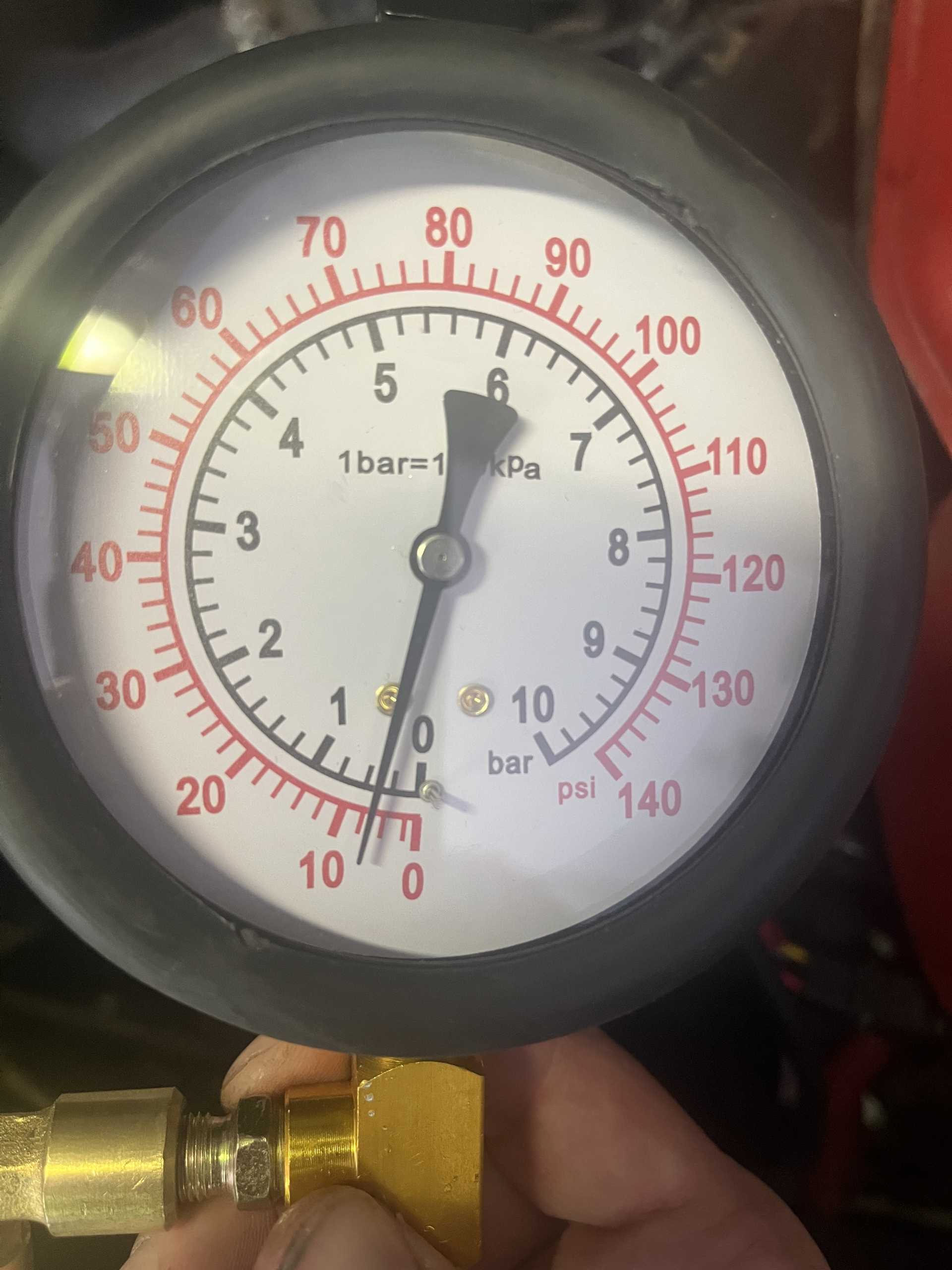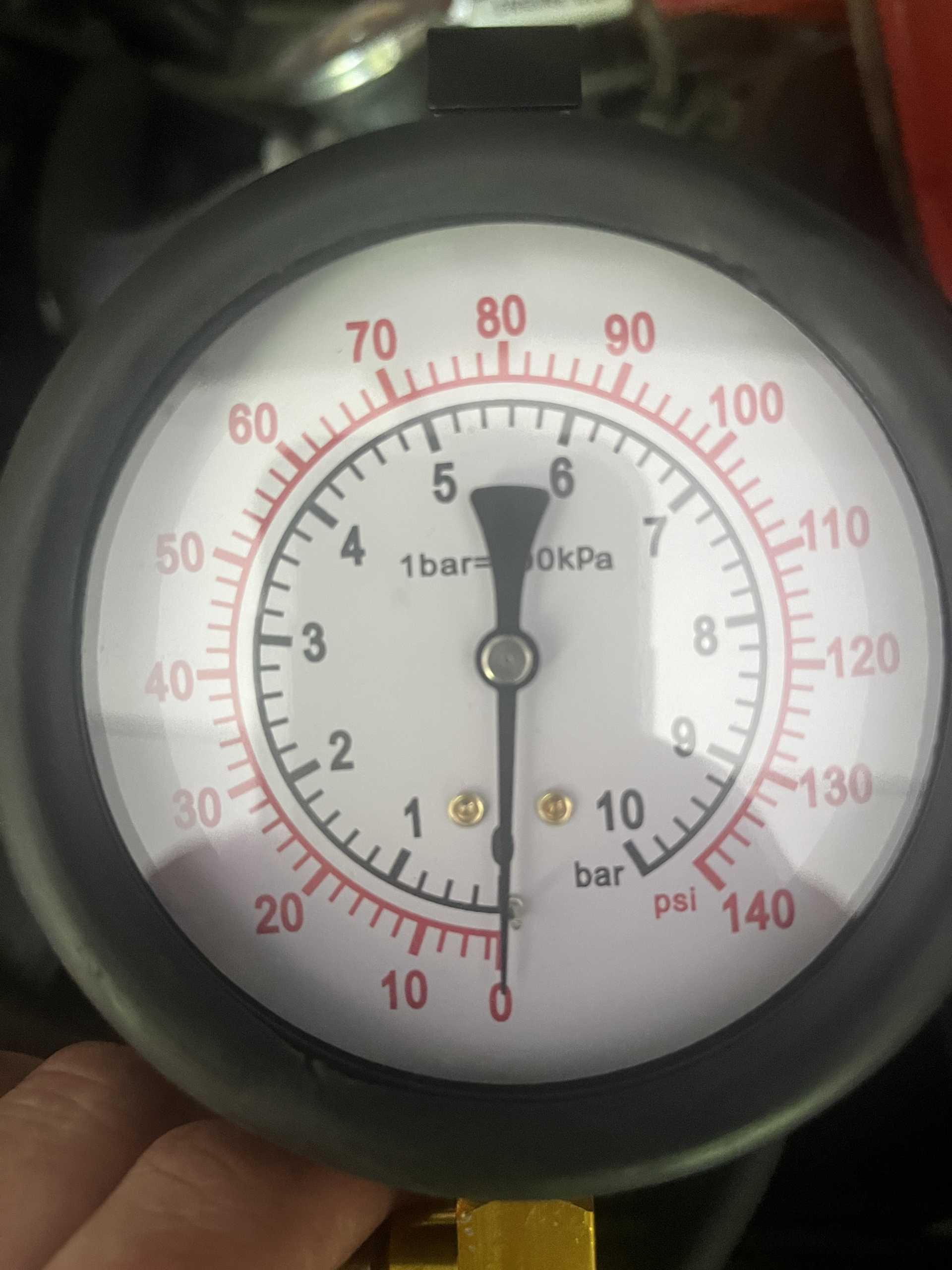
 
     |
| 84 2.5l Slight misfire and rough idle after warm (Page 1/2) |

|
zostendorf
|
MAY 28, 11:11 PM
|
|
After combing this site and others for the last 5 months, I have not been able to resolve my issue and I now have a challenge for the most expert of Fiero experts out there.
Background: I bought this car in January from someone who bought it from the original owner. The gas tank was rusted out and the fuel was not working. I bought the car, then immediately refurbished the gas tank and replaced the fuel pump and fuel pick-up assembly.
Car Info: 1984 Fiero, 2.5L Iron Duke, 4 Speed Manual, 67,000 original miles.
Primary Issue: I have a slightly rough idle that occurs after the car warms up and the ECM starts to do its thing. The car runs perfect on cold start and proceeds to run perfect for the first few minutes. The rough idle is characterized by a slight misfire every 5-7 seconds after the car has run for about 3-5 minutes. It does not stall out. The tach sits at about 900-1100 RPM, and the misfire causes the RPM to dip to around 700 RPM extremely briefly. The car does not misfire while driving. Sometimes the tach gauge does not work at all, and other times it’s accurate and displays this bounce in RPM.
Replaced parts:
- fuel pump
- fuel pick-up assembly
- fuel filter
- fuel regulator
- fuel injector
- ICM
- Ignition coil
- spark plug wires
- distributor rotor
- distributor cap
- MAP sensor
- IAC sensor
- TPS sensor
- O2 sensor
- Engine Coolant Temp sensor
- Engine Coolant Temp sender (for gauge)
- All vacuum hoses routing from throttle body
- clutch master cylinder
- clutch slave cylinder
Other services:
- ignition timing (followed the correct procedure with timing light and setting the ECM into the mode required for timing)
- oil change
- clutch fluid flush
- vacuum leak test (ERG is currently plugged)
- inspected and tightened all ground connections
Addition info:
- the spark plugs appear to be in very good condition and do not display any fowling. They also do their job totally fine during the warm up operation.
- I understand the tach filter could be causing the tach gauge issue, but I’m uncertain if the ECM relies on this component to regulate the engine.
- the care is displaying NO CODES
- there is some moisture in the exhaust after I have not started the car for several days. this moist dissipates after the first 30-60 seconds. I assume a leaky head gasket may be the cause
PLEASE HELP!! if you have any clue I’d love to hear it. I’m at my whits end.[This message has been edited by zostendorf (edited 05-28-2024).]
|
|

|
Patrick
|
MAY 28, 11:50 PM
|
|
| quote | Originally posted by zostendorf:
...there is some moisture in the exhaust after I have not started the car for several days. this moist dissipates after the first 30-60 seconds. I assume a leaky head gasket may be the cause.
|
|
It's quite normal for steam to exit the exhaust tips upon first starting the engine. It's usually just condensation being burned off from inside the exhaust system.
Have you done a compression test?
What is the fuel pressure? Does the pressure drop quickly after the pump stops? Does any fuel drip from the throttle body injector when there's fuel pressure and the engine isn't running?
You've thrown a lot of parts at this. There's no guarantee that the new parts are performing any differently/better than what was removed. Do you have access to an OB1 scanner and/or WinALDL to actually see what's going on with all these components? If not, you're flying blind.[This message has been edited by Patrick (edited 05-29-2024).]
|
|

|
zostendorf
|
MAY 29, 12:10 AM
|
|
Thank you Patrick,
I have not preformed a compression test. I honestly did not suspect this as the issue since the car seems to run fine during warm up or when I unplug a sensor (MAP, TPS, etc) and trigger the "closed loop" operation of the ECM. The engine also preforms fine while driving (I have not taken the car more than a distance of 5 miles, nor have a taken it over about 60 mph).
I do not have a OBD1 Scanner, but it's probably time to get one.
I have of experience on older carbonated GM vehicles, so the ECM-controlled vehicles are new territory for me. I will take these actions in the next few days and let you know if anything is of note.
|
|

|
Patrick
|
MAY 29, 12:36 AM
|
|
| quote | Originally posted by zostendorf:
I have not preformed a compression test. I honestly did not suspect this as the issue...
|
|
Compression test, fuel pressure, ignition timing... these are all basic tuneup type procedures. It's always good to ensure that there's nothing amiss with these before digging deeper. And with an ECU present, it's also necessary to check the electronics with a scanner and/or a software program.
For example, it's a huge advantage to know what the actual coolant temperature is as seen by the ECU... as the Fiero temperature gauge is notorious for being inaccurate.
By the way, what temperature thermostat do you have installed?
It's amazing how often first time Fiero owners haven't even so much as checked the ignition timing before seeking assistance (...or sometimes if they have, it was done without the ALDL jumper being in place).[This message has been edited by Patrick (edited 05-29-2024).]
|
|

|
zostendorf
|
JUN 02, 01:17 AM
|
|
| quote | Originally posted by Patrick:
Compression test, fuel pressure, ignition timing... these are all basic tuneup type procedures. It's always good to ensure that there's nothing amiss with these before digging deeper. And with an ECU present, it's also necessary to check the electronics with a scanner and/or a software program.
For example, it's a huge advantage to know what the actual coolant temperature is as seen by the ECU... as the Fiero temperature gauge is notorious for being inaccurate.
By the way, what temperature thermostat do you have installed?
It's amazing how often first time Fiero owners haven't even so much as checked the ignition timing before seeking assistance (...or sometimes if they have, it was done without the ALDL jumper being in place).
|
|
Thanks,
I need to get my compression gauge back from my old house, so that’s planned.
My stock 84 TB does not have a valve/port available to measure the fuel pressure, and I have been hesitant to insert an inline fuel gauge to avoid cutting into anything. I understand there is an inline fuel pressure gauge that threads into the line where the fuel filter goes, but I have had trouble finding one online.
The ignition timing has been adjusted by jumping the ground and diagnostic pins at the ECM and while using my timing light to get readings on the 1st and 4th cylinders. I’ve done this several time and everything appears correct.
I have replaced the temperature thermostat with a 180, the previous thermostat was also a 180. I understand that 195 is stock. I have rrad about their comparison, but no where has anyone described the temperature difference contributing to my symptoms.
I have ordered an obd1 adapter for my computer and have been reading up on WinALDL. I appreciate any advice in using this software.
|
|

|
Patrick
|
JUN 02, 03:18 AM
|
|
| quote | Originally posted by zostendorf:
My stock 84 TB does not have a valve/port available to measure the fuel pressure, and I have been hesitant to insert an inline fuel gauge to avoid cutting into anything. I understand there is an inline fuel pressure gauge that threads into the line where the fuel filter goes, but I have had trouble finding one online.
|
|
I've tested the fuel pressure on my '84 by simply disconnecting the fuel line in a convenient location, sliding a rubber fuel line hose over the metal tube (and clamped), with a cheapie vacuum/pressure gauge on the other end. Obviously the engine won't run this way, but the fuel pump can still be primed and a pressure reading can be taken (including observing how quickly the pressure dissipates).
| quote | Originally posted by zostendorf:
The ignition timing has been adjusted by jumping the ground and diagnostic pins at the ECM and while using my timing light to get readings on the 1st and 4th cylinders. I’ve done this several time and everything appears correct.
|
|
A tip. Just connect the timing light to the main lead off the coil.
| quote | Originally posted by zostendorf:
I have replaced the temperature thermostat with a 180, the previous thermostat was also a 180. I understand that 195 is stock. I have rrad about their comparison, but no where has anyone described the temperature difference contributing to my symptoms.
|
|
You're not doing yourself or your engine any favors by running it with a thermostat that's 15° colder than what the engine was designed to run at.
| quote | Originally posted by zostendorf:
I have ordered an obd1 adapter for my computer and have been reading up on WinALDL. I appreciate any advice in using this software.
|
|
The best advice I can give you is to download and install the WinALDL viewer mentioned in This thread.[This message has been edited by Patrick (edited 06-02-2024).]
|
|

|
zostendorf
|
JUN 04, 05:40 PM
|
|
Update on fuel pressure test. Something is wrong here.
Background:
Early in my restoration, I replaced the fuel pump, completely new fuel sending unit, fuel filter, fuel regulator and fuel injector.
Testing:
For the testing a ordered a robust fuel pressure kit to accommodate the 84 Fiero's fuel line. Thankfully, this kit came with a a hose that threads into both ends of the fuel line where the fuel filter sits. So I'm reading the fuel pressure before it reaches the fuel regulator and fuel injector. Here is an image of the inline setup:

I've taken a constant reading of roughly 6-7 PSI while the car is running. I understand it should actually be around 12 PSI. Here is an image of the reading while the car is running, the gauge does not move from this position:

Secondly, the fuel pressure immediately drops to zero when the car is turned off. Here is an image of the reading when the car is off:

Anyway, seems like I may have gotten closer to a root cause. Like I said before, the fuel system components are the first things I've replaced and if they've never been up to par that explains why I could figure out the issue and started troubleshooting sensors and everything else. I just assume that if everything in the fuel system is new, then surely they can't be the problem. Not sure where to dig into here. The pump and small internal hose that goes from the pump to the sending unit are secure.
I'll check the ground connect for the fuel pump, but if that all checks out I suppose I'll drop the tank again and see what is going on inside there. Any advice is welcome.[This message has been edited by zostendorf (edited 06-04-2024).]
|
|

|
Patrick
|
JUN 04, 07:13 PM
|
|
| quote | Originally posted by zostendorf:
I just assume that if everything in the fuel system is new, then surely they can't be the problem.
|
|
As you've possibly discovered, it's a big mistake to assume that new parts are functioning properly.
One comment I do have about your fuel pressure gauge though, is that when measuring fuel pressure of about 12psi max, I suspect that a gauge that measures up to 140psi is not going to be very accurate at those low pressures. Having said that, the fact that the fuel pressure drops immediately is an indicator that there's a problem somewhere. It's usually an internal leak in the tank, but it could also possibly be a leak in the fuel pressure regulator diaphragm.
Out of curiosity, what brand fuel pump did you install?
|
|

|
zostendorf
|
JUN 04, 07:54 PM
|
|
| quote | Originally posted by Patrick:
As you've possibly discovered, it's a big mistake to assume that new parts are functioning properly.
One comment I do have about your fuel pressure gauge though, is that when measuring fuel pressure of about 12psi max, I suspect that a gauge that measures up to 140psi is not going to be very accurate at those low pressures. Having said that, the fact that the fuel pressure drops immediately is an indicator that there's a problem somewhere. It's usually an internal leak in the tank, but it could also possibly be a leak in the fuel pressure regulator diaphragm.
Out of curiosity, what brand fuel pump did you install? |
|
Thank you Patrick,
yes I realize I probably should have bought a lower-range gauge, but this one is still telling me something. On the fuel pump question, I honestly don't recall what brand it is. It was new in box from the car's previous owner. It was the first thing they intended to install before they just ended up selling it to me. The fuel pump is the only part I did not buy myself.
For an internal leak, what should I be looking for? I ordered and installed this fuel sending unit kit from Rodney Dickman's site: http://rodneydickman.com/pr....php?products_id=549
The product page states "includes a new fuel pump". Mine did not, I don't recall that being a part of the package back when I bought it in January.
Edit: You also pointed out the fuel regulator possibly leaking. I did order and install a new fuel regulator. I see no visual signs of leaking at the regulator or anywhere in/around the TB.[This message has been edited by zostendorf (edited 06-04-2024).]
|
|

|
Patrick
|
JUN 04, 08:11 PM
|
|
| quote | Originally posted by zostendorf:
I ordered and installed this fuel sending unit kit from Rodney Dickman's site. The product page states "includes a new fuel pump". Mine did not, I don't recall that being a part of the package back when I bought it in January.
|
|
At the very bottom of that page, the various options are presented. Usually, a new fuel sending unit is installed when the signal to the gas gauge is all screwed up. Some people also require a new fuel pump, others don't... which is why options are offered.
I suspect the new fuel pump you got from the previous owner was a crappy no-name unit which should probably be tossed. It's also important that the proper submersible flexible fuel line is used inside the gas tank. I doubt the short piece of fuel line supplied with new fuel pumps is the proper stuff, as submersible fuel line is relatively expensive. Regular fuel line used inside the gas tank just rots.
| quote | Originally posted by zostendorf:
You also pointed out the fuel regulator possibly leaking. I did order and install a new fuel regulator. I see no visual signs of leaking at the regulator or anywhere in/around the TB.
|
|
On the 2.8, there's an easy way to tell if the diaphragm is internally leaking, but I don't know where one would check with the duke. Perhaps someone else might know.[This message has been edited by Patrick (edited 06-04-2024).]
|
|
    
  |
|















